




 [Rundweg Religion]
[Rundweg Religion]
History of Dorsten - Station 21: St. Ursula - Perpetuating 300 years of history behind glass. Translation: Lyn
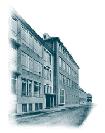
Connecting history with the present has been achieved via the "unveiling" of Dorsten's 21st History Station plaque. The glass history board was presented in front of the entrance of the St. Ursula Grammar School (St Ursula Gymnsaium) exactly 306 years after the day on which the Order of the Ursulines of Dorsten was founded. Despite the freezing weather, the Mayor, Lambert Lütkenhorst, unveils the newest History Station of Dorsten in the street named "Ursulastraße". "The history of the Ursuline order in our town and with our town is vividly recalled, here" says Lütkenhorst. "Hier wird lebhaft an die Geschichte der Ursulinen in der Stadt und mit der Stadt erinnert"
This day had been specially chosen for the presentation of the History Station because exactly 306 years previously, the first four nuns came from their "Mother Convent" ("Mutterkloster") in Cologne to Dorsten, in order to dedicate themselves to the education and instruction of young girls. In Lambert Lütkenhorst's own words, the "long and varied" ("lange und wechselhafte") history has now been placed for perpetuity within the glass presentaion board. The pupils have worked through all of the important events from the initial beginnings in 1699 right up until the 300th Jubilee in 1999, through the first problems during the Cultural War (Kulturkampf), through the destruction of the school during the Second World War and the introduction of co-education in 1971, which also allowed boys to attend the Grammar School. Johanna Eichmann is particularly proud, that the History Station is the result of "the path of co-operation" ("auf dem Weg der Kooperation") between both of the Grammar Schools in Dorsten. "It is a true Petrisula Project" "Das ist ein wahres Petrisula-Projekt". (WAZ from 19.01.2005)
Translator's Note: the "WAZ" is an abbreviation for a local newspaper
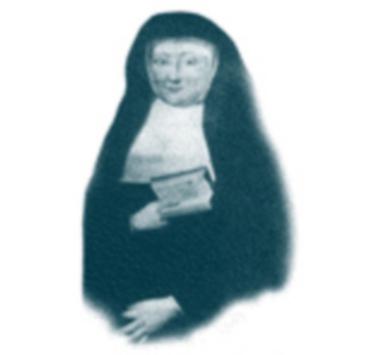 M. Maria Victoria, the first Mother Superior of the Convent |
1699 |
_ |
Four Ursuline Nuns - two of them being the daughters of the German Earl of Nesselrode - Reichenstein from Herten- arrive in Dorsten from the original Convent of Cologne. They open a free elementary school and a girls' boarding school in the building known as "Hohen Haus" in the street, Blindestraße (nowadays known as the Ursulastraße), in order to be able to educate young women, following Christian principles. After the purchase of further buildings, the "Hohe Haus" is converted into the Convent Chapel. | |
|
The Carlsbad Decrees
| _ |
1819 |
_ |
The political turmoils of the end of the 18th century threaten the continued existence of the Convent and result in the closure of the school. The Prussian Parliament decrees the Convent and School to be maintained. |
|
|
1876 |
_ |
The dissolution of the convents during the Cultural War "Kulturkampf" forces the Ursulines to emigrate to the town of Weert in the Netherlands. | |
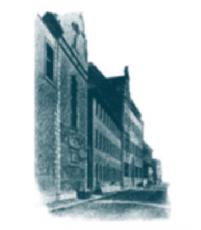 St Ursula ca. 1900 |
1888 |
_ |
After the end of the Cultural War "Kultirkampf" (1887), the Ursuline Nuns return and re-continue the teaching in the "School for Young Ladies" (Höhere Töchterschule". They are no longer permitted to run an elementary school at this stage. | |
|
Bosnian Annexation Crisis
| _ |
1909 |
_ |
From this year onwards, the Ursuline Nuns extend their range of educational opportunities for young women and open new types of schools |
|
|
1927 |
_ |
The Ursuline Nuns take leave of their first A'Level year students and begin with the construction of the Middle School ("Mittelschule" - nowadays a secondary modern school "Realschule") | |
|
|
1941 |
_ |
The nuns prevent their expulsion with a contract with the armed forces "Wehrmacht", which sets up a military hospital in the building. The Upper School "Oberschule" is put under state control and accommodated in the Petrinum Grammar school (Gymnasium Petrinum). | |
|
Potsdam Conference 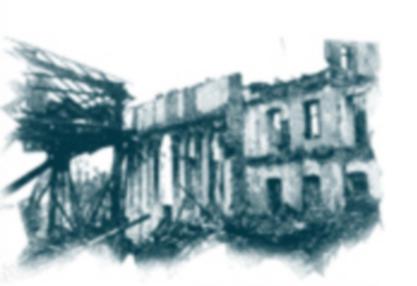 Destruction (1945) | _ |
1945 |
_ |
More than 80% of St Ursula is destroyed on 22nd March during the bombardment of the town. Following the end of the war, the re-construction is immediately begun. The schools are returned to the Ursuline Nuns and are re-opened on 21st January 1946. |
|
|
1968 |
_ |
The reform of the Upper School of the Grammar School begins in this year. In 1970, the St Ursula Grammar School and the Petrinum Grammar School develop a co-operation model, which develops the path for neighbouring schools in NRW to work together. | |
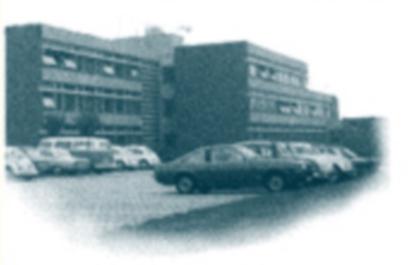 The Secondary Modern School |
1971 |
_ |
Co-education is introduced in both of the Grammar Schools in Dorsten. The St Urusla Secondary Modern School (St Ursula-Realschule" remains exclusively a girl's school and moves into the new school building at the address "Am Nonnenkamp". | |
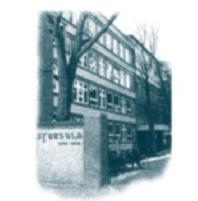 St Ursula Grammar School ( |
1999 |
_ |
The Ursuline Nuns of Dorsten celebrate their 300 year existence. Former pupils, parents and teachers establish the non-profit-making organisation "Verein zum Erhalt der St. Ursula-Schulen" for the preservation of the St Ursula schools. |
[zurück]
Daten und Fakten
Eröffnung - 21st January 2005
Adresse - The Convent of the Ursuline Nuns at the address "Ursulastraße"
Geodaten - 51°39'41.5 ,6°57'56.65
The Official Opening Ceremony on 21st January 2005
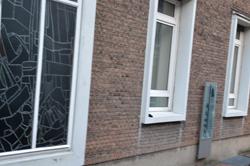
The History Station Presentation Board in front of the Convent.
On the occasion of the day of celebration, the organisation for the Preservation of the Old Town Hall "Trägerverein des Alten Rathauses" and the Convent of the Ursuline Nuns "Konvent der Ursulinen" gave out an invitation for a presentation in the Convent Chapel about the founder of the Ursuline Order. Dr. Anne Conrad from the University of Saarbrücken gave a lecture about the theme of the Ursuline Nuns in Dorsten following the tradition of Angela Mericis."Die Ursulinen von Dorsten in der Tradition Angela Mericis"
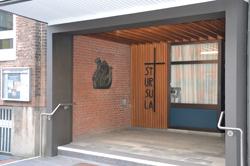
The Convent Portal
Conrad explained that 150 years before the Ursuline Nuns opened their convent in Dorsten, Angela Merici had cleverly, courageously and confidently "mit Klugheit, Mut und Zuversicht" established the Holy Ursula Order "Orden der Heiligen Ursula". "The Ursuline Nuns of Dorsten took their founder as an example, taught with confidence and confidently confronted conflicts and criticism." („Die Dorstener Ursulinen haben sich ihre Gründerin zum Vorbild genommen, haben selbstbewusst gelehrt und sich Konflikten und Kritik selbstbewusst gegenübergestellt.")
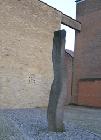
In front of the Convent Chapel
Mayor Lütkenhorst stressed that the Ursuline Nuns in Dorsten had gone through hard times and left them behind them. "The Ursuline Nuns faced the challenges of the times, but never relinquished themselves to the "Zeitgeist" spirit of those times and have always held true to their principles. („Die Ursulinen haben sich den Anforderungen der Zeit gestellt, sich jedoch nie dem Zeitgeist hingegeben und sind ihren Prinzipien treu geblieben." )
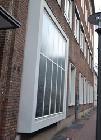
The Front Façade, seen from the street
Lütkenhorst gave the reminder, that the schools' exsitences were often endangered and gave the the Nuns encouragement for the future and promised: "There will continue to be Ursuline Nuns in Dorsten, for many years to come." („Es wird die Ursulinen in Dorsten noch einige Jahre geben.") (WAZ from 19.01.2005)
Translator's Note: WAZ is the abbreviation of a local newspaper.

